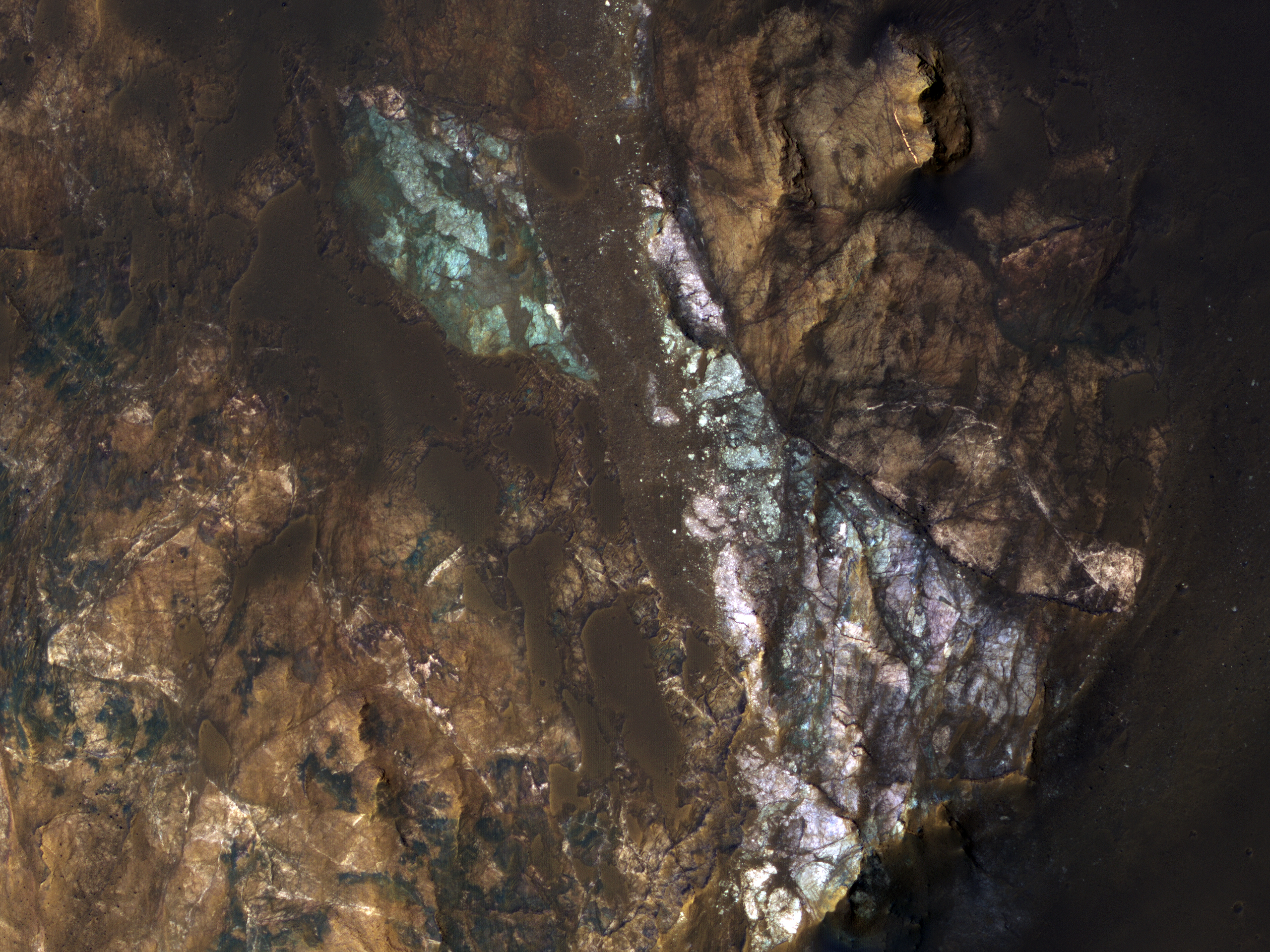Crater formation is an intense phenomenon that sends shock waves into the surface that scours and displaces material to form a cavity. Larger craters are observed to possess a central structure formed as a result of bedrock uplifted from the subsurface. High pressures and temperatures experienced during impact cause irreversible changes to target-surface materials that contribute to the formation of rocks called “impactites.” These include impact melts which, as a consequence of melting and re-solidifying, are younger than the target-surface.
Identifying and studying well-preserved bedrock exposures associated with central uplifts may provide insights into subsurface composition and the geologic history of the target prior to impact.
Here, we see a 41-kilometer diameter crater in Terra Sabaea that shows massive and well-exposed bedrock in its central uplift that is highly fractured,
possibly due to the formative impact event. In addition, HiRISE color imaging facilitates the identification of at-least two different kinds of material that comprise the uplift. Erosional remnants of impact melt coating the exposed bedrock of the uplift is visible in the north-west part of the color strip. Detailed studies of such deposits could inform us about various modification processes that the crater underwent after initial impact.
ID:
ESP_014361_1585date: 19 August 2009
altitude: 257 km
https://uahirise.org/hipod/ESP_014361_1585
NASA/JPL-Caltech/University of Arizona
#Mars #science #NASA
